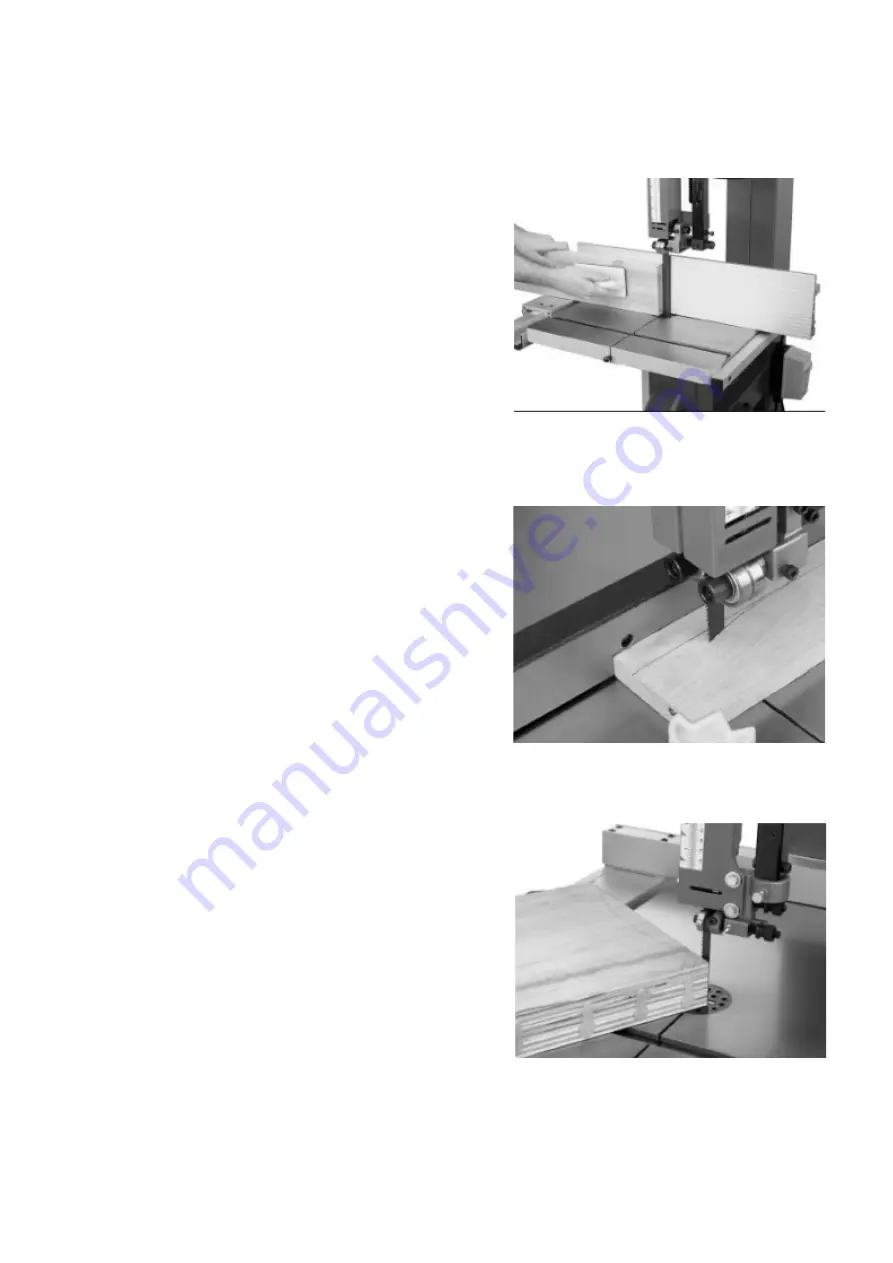
12
Operation
RESAWING
Re sawing is the process of cutting a board into two or
more thinner boards, the maximum board width that can be
re sawn is limited by the maxi-mum cutting height of the
band saw. One of the most important considerations when
resawing is blade selection, generally, the wider blade, the
better. In most applications, a hook or a skip tooth style
will be desirable. Choose blades with fewer teeth-per-inch,
because they offer large gullet capacities for clearing
saw-dust, reducing heat buildup and reducing strain
on the motor. In fig 19. Fig 18
CUTTING CURVES
When cutting curves, simultaneously feed and turn the
stock carefully so that the blade follows the layout line
without twisting, if a curve is so abrupt that it is necessary
to repeatedly back up and cut a new kerfs , use either a
narrower blade or a blade with more TPI (teeth per inch), or
make more relief cuts. Always make short cuts first, then
proceed to the longer cuts, relief cuts will also reduce the
chance that the blade will be pinched or twisted. Relief cuts
are cuts made through the waste portion of the work piece
and are stopped at the layout line. As you cut along the
layout line, waste wood is released from the work piece,
alleviating any pressure on the back of the blade, relief cuts Fig 19
also make backing the work piece out easier,
if needed. In fig. 20.
STACKED CUTS
One of the benefits of a band saw is its ability to
cut
multiple copies of a particular shape by stacking a number
of work pieces together. Before
making stacked cuts,
ensure that both the table
and the blade are properly
adjusted to 90, otherwise, any error will be compounded.
In
fig .21.
Fig. 20
Summary of Contents for C-18VS
Page 1: ...INSTRUCTION MANUAL Woodworking Band Saw MODEL C 18VS Harvey Industries Co Ltd...
Page 15: ...14 ASSEMBLY DRAWING...
Page 16: ...15 ASSEMBLY DRAWING...
Page 17: ...16 ASSEMBLY DRAWING...
Page 18: ...17 ASSEMBLY DRAWING...
Page 19: ...18 ASSEMBLY DRAWING...
























